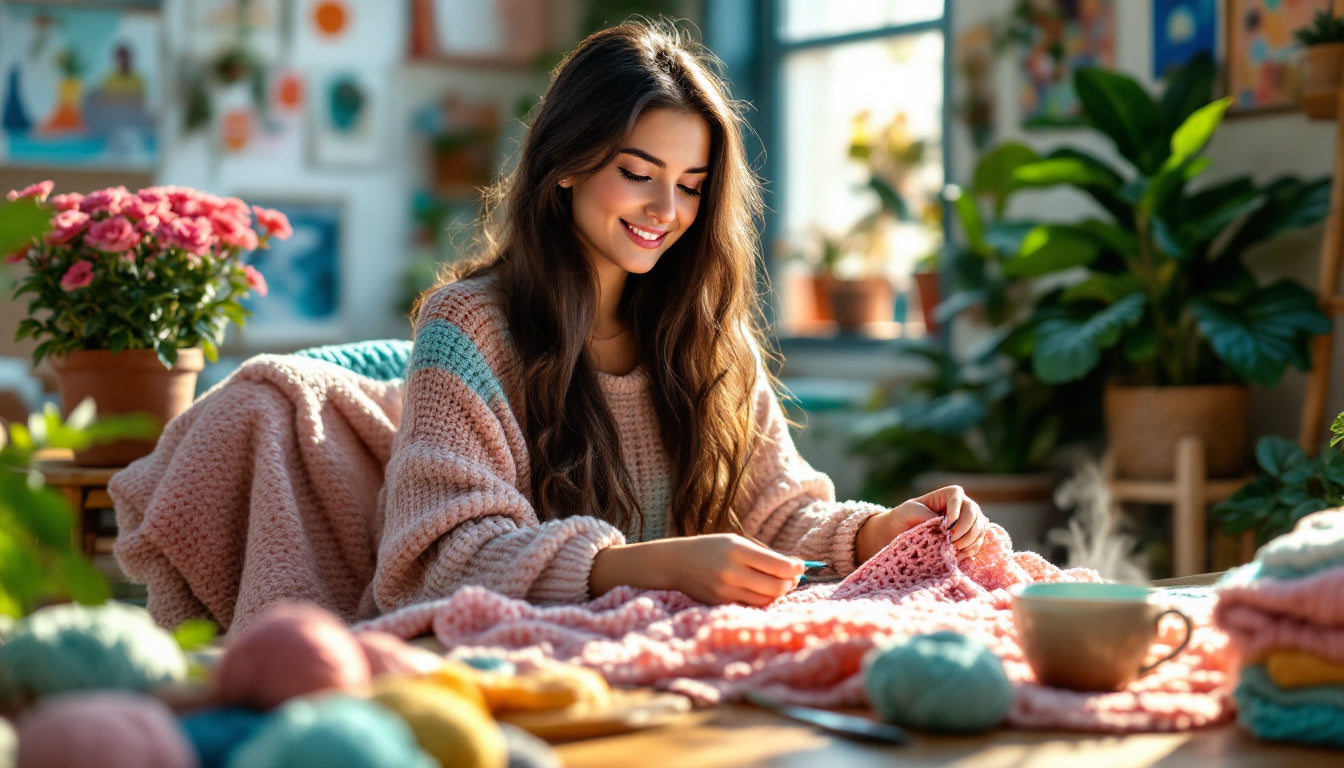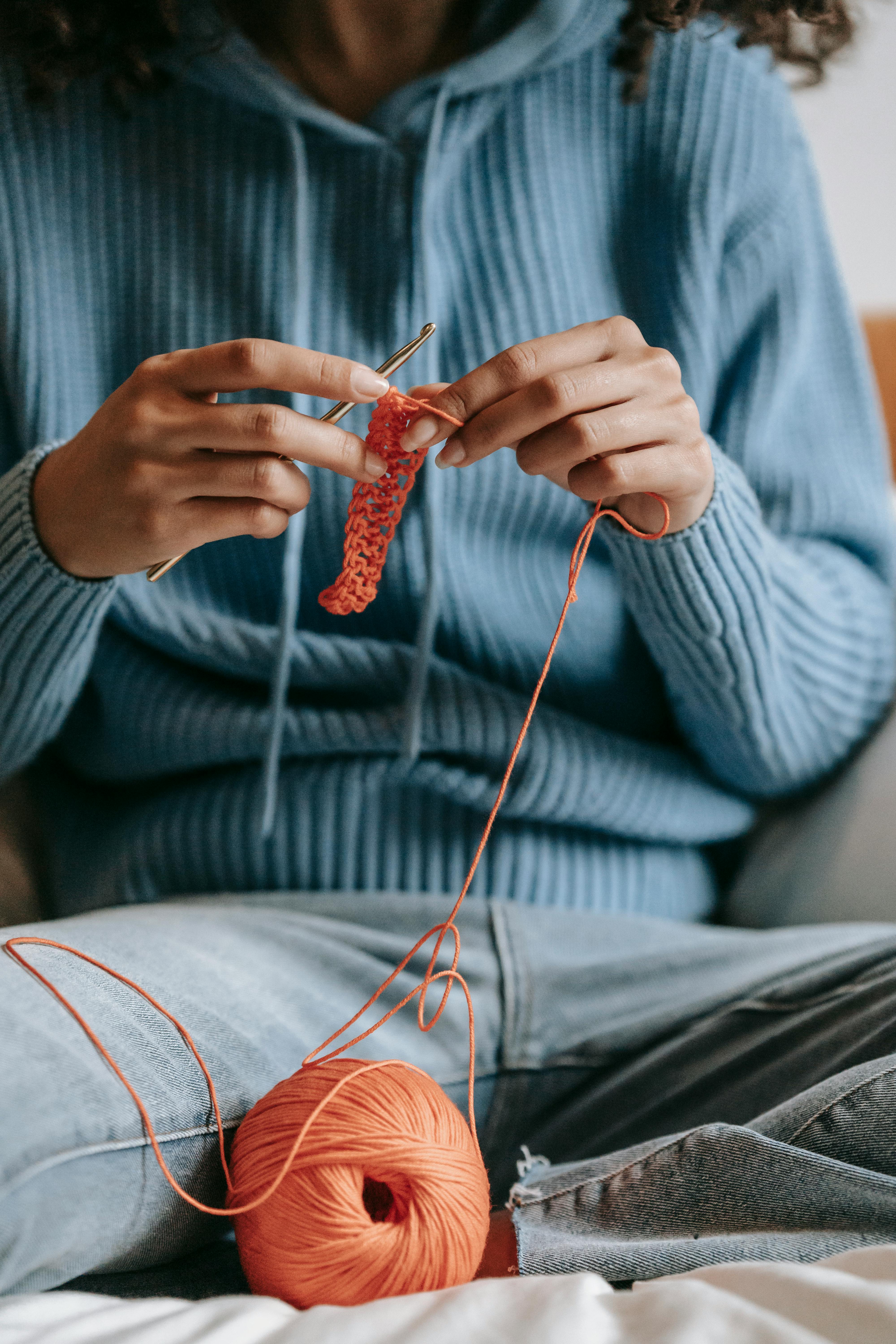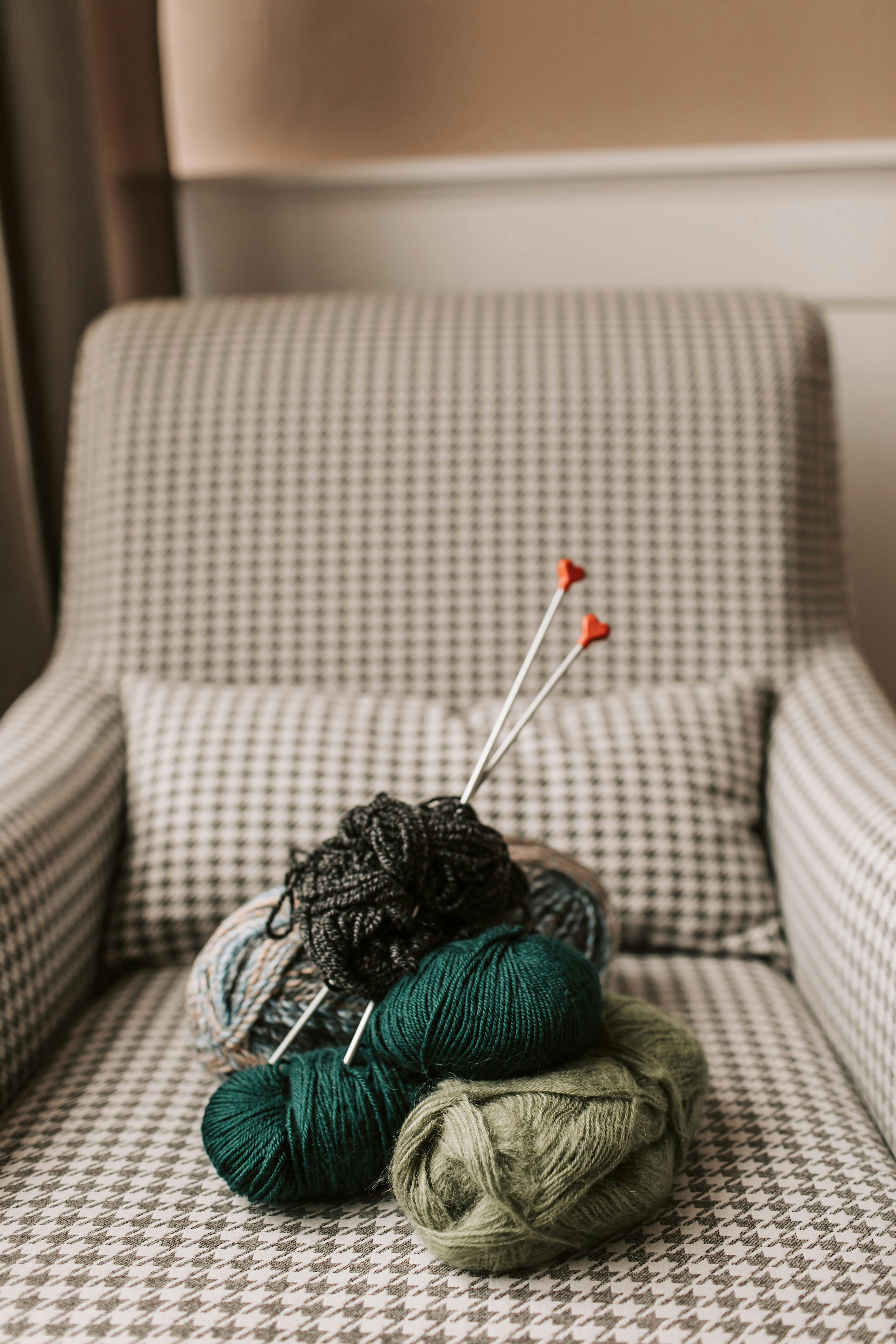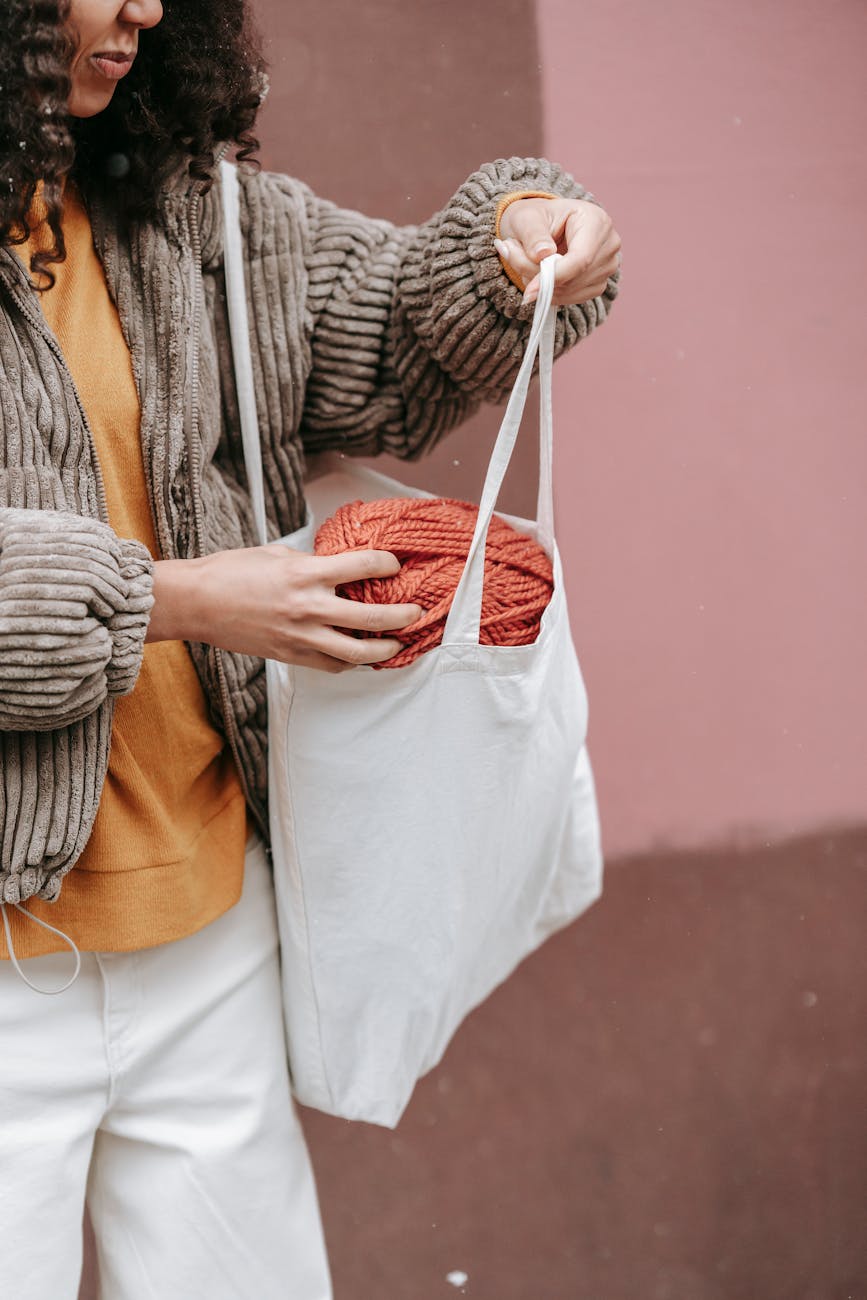
How Much Yarn Does Crochet Use? Tips to Save Time & Money!
Understanding how yarn usage correlates with crochet stitches can save you time, money, and frustration. Whether you're just starting or have been crocheting for years, choosing the right stitch impacts everything—from the softness of the fabric to the overall cost of your project. Some stitches naturally use less yarn, while others are more of a "yarn eater." Knowing this small detail can make a big difference in how you plan and execute your projects. Ready to optimize your crochet skills? Let’s explore further!
Check out this guide on Which Craft Uses More Yarn: Crochet or Knitting? for more insights on yarn usage differences.
What Influences Yarn Usage in Crochet Stitches?
When it comes to crochet, understanding how much yarn you'll need isn't as simple as picking a hook and a skein. Yarn usage is influenced by a range of factors, from the stitch you choose to the tools you use and even your personal crocheting style. Let’s break it down so you can maximize your efficiency and avoid running out of yarn halfway through a project.
The Role of Stitch Type
Some crochet stitches are yarn guzzlers, while others are more conservative. For example, single crochet stitches are compact and use relatively less yarn, while double crochet stitches, being taller, require more yarn. Want to add a decorative touch with puff or bobble stitches? You’ll use even more yarn because those stitches involve multiple yarn overs in a single stitch.
If you're still learning the basics of stitches, check out How to Single Crochet for a breakdown of one of the simplest and most frequently used crochet stitches.
Yarn Thickness and Weight Matters
The type of yarn you choose has a significant impact on your project. Bulky or chunky yarns require more material because of their thickness compared to lighter-weight yarns like fingering or sport weight. Even for the same project or pattern, switching from a lightweight yarn to a bulky one can vastly increase yardage requirements.
For some tips on matching yarn type with patterns, feel free to explore Learn How to Crochet.
Impact of Hook Size on Yarn Consumption
Your choice of crochet hook also influences yarn usage. A larger hook often results in looser, airier stitches, which might save you some yarn depending on the pattern. Conversely, smaller hooks produce denser fabric, leading to greater yarn consumption.
Have you ever tried making samples with the same yarn and different hooks? It’s a great experiment to better understand this relationship. Discussing these factors with fellow crocheters on platforms like How Much Yarn Does Each Crochet Stitch Use? can also help.
How Tension Affects Yarn Usage
Your crocheting tension is one of the most personal variables in yarn usage. If you crochet tightly, you’re essentially packing the yarn between stitches, which increases consumption. If your stitches are looser, you might end up using less yarn.
Everyone has a unique crocheting style. That’s why swatching isn’t just a suggestion; it's a necessity! You don’t want to play yarn chicken halfway through a project. For more ideas on improving your control, Does Crochet Use More Yarn Than Knitting? offers some intriguing insights into how technique plays a role.
By understanding these factors—stitch type, yarn weight, hook size, and tension—you can plan your projects with greater accuracy and fewer surprises. Stay tuned for more details in the subsequent sections!
Comparing Yarn Usage Across Popular Stitches
When deciding on a crochet stitch for your next project, it's not just about aesthetics. Stitches play a pivotal role in determining how much yarn you’ll end up using. From the dense weave of single crochet to the airy openness of filet patterns, yarn usage differs dramatically. Let’s break it down for a clearer picture.
Single Crochet and Its Yarn Demands
 Photo by Miriam Alonso
Photo by Miriam Alonso
Single crochet (sc) stitches are the workhorses of crochet. Tight and compact, each stitch creates a dense, firm fabric that’s perfect for making items like dishcloths, amigurumi, or baskets. However, this density comes at a cost: single crochet stitches use more yarn than many other stitch types. Why? Because the shorter, tighter loops pack the yarn tightly together. Think of it as squeezing juice from an orange. With these stitches, there’s no wasted space.
Want to refine your single crochet skills? Visit How to Single Crochet for a full guide.
Double Crochet: A More Yarn-Efficient Option
The double crochet (dc) stitch strikes a balance. It’s taller than single crochet, so it covers more area with less density. This makes double crochet a go-to choice for larger projects like blankets or scarves. Double crochet is more yarn-efficient than single crochet, because the extended height spreads the yarn further. Think of it as stretching out a piece of dough—the same amount covers more surface area.
Interestingly, you might notice a slight decrease in yarn weight after completing projects with double crochets versus single crochets. For a versatile project idea using this stitch, explore Quick Crochet Projects.
Openwork Stitches and Yarn Savings
Lacy, openwork patterns like granny squares or filet crochet are the champions of yarn conservation. The spaces created by these patterns mean less yarn is used overall. Granny squares are not just iconic—they're brilliantly efficient! You’re essentially "using yarn to make air." These stitches are ideal for lightweight blankets, summer wraps, or decorative items.
Looking to add some artistry to your crochet with minimal yarn? Check out Crochet Magic: Turning Yarn into Art.
Stitches That Require the Most Yarn
Some stitches are absolute “yarn-hungry monsters.” Stitches like the waffle stitch, puff stitch, or even the luxurious crocodile stitch can almost double your yarn requirements. Why? These decorative stitches often involve multiple yarn overs or loops stacked on top of each other, creating texture and three-dimensional patterns.
Want more insights on stitches that eat yarn for breakfast? The article What Crochet Stitch Takes the Most Yarn provides an additional breakdown of what makes certain stitches heavier on yarn usage.
In short, the type of stitch you choose directly influences how much yarn you'll need. For efficiency, lighter and taller stitches are the way to go, whereas denser or textured stitches will demand more of your precious skeins. Keep this in mind as you plan your next crochet masterpiece!
Practical Tips for Managing Yarn Usage in Projects
Managing yarn usage effectively is key when you're working on crochet projects. A little planning and some simple strategies can help you avoid frustrating scenarios like running out of yarn mid-project. Below, I'll break down three crucial tips that every crochet enthusiast should know.
Choosing the Right Stitch for Your Project
Picking the right stitch is like choosing the perfect size shoe—it needs to fit both your style and your resources. Some stitches consume more yarn than others, so it's important to align your stitch selection with the amount of yarn you have on hand. For instance:
- Taller Stitches (like Double or Treble Crochet): These are generally more efficient because they cover more space with less yarn.
- Dense Stitches (like Single Crochet or Puff Stitch): While beautiful, they tend to use up a lot of yarn quickly.
To prevent any surprises, it's a good idea to plan ahead and choose stitches that match the scale of your project and the yarn you’ve got. For more tips on stitches, you might enjoy this resource on Tips, Tricks & Reviews Tagged "Crochet Skill".
Using Swatches to Estimate Yarn Needs
 Photo by Miriam Alonso
Photo by Miriam Alonso
Ever heard the phrase "measure twice, cut once?" The same idea applies to estimating yarn. Instead of diving right into your project, take a moment to create a swatch—a small sample of your intended stitch pattern. Here's how:
- Crochet a Sample: Use the yarn and stitch you'll be using in your project.
- Measure It: Take note of the swatch's width, height, and yarn length.
- Scale It: Calculate how much yarn is required by multiplying it to match your project's total size.
This step allows you to predict how much yarn you need while ensuring consistency in your work. To explore more about practical yarn use, check out Yarn Hacks Every Crochet and Knitter Needs to Know.
Efficient Project Planning
Stretching your yarn doesn’t mean cutting corners, but rather using clever techniques to maximize impact. Here’s where openwork patterns and larger hooks come into play. Openwork patterns—like granny squares or filet crochet—use less yarn thanks to their built-in spaces. Meanwhile, larger hooks mean looser stitches, giving the fabric an airy, flexible feel. Combine these two strategies and you’ll find that you can cover a lot of ground with a modest amount of yarn.
- Granny Squares: Need a lightweight blanket? This pattern works like a charm and saves yarn.
- Switch to Bigger Hooks: Example: using an 8mm hook instead of a 6mm can stretch your materials further.
Want more detailed planning advice? The article How to Use All Your Yarn on a Project offers additional tips for making the most out of your stash.
Managing yarn doesn’t have to be a guessing game. By choosing efficient stitches, using swatches, and planning projects wisely, you’ll make every skein count!
Bonus: Does Crochet Use More Yarn Than Knitting?
If you've ever wondered why your yarn supply runs out faster with crochet than knitting, you're not alone. It’s a common observation, and there’s a logical reason for it. By understanding the mechanics behind each craft, you can make better choices for your projects—or at least prepare your stash accordingly.
Why Crochet Typically Consumes More Yarn
Crochet stitches are built differently from knitting stitches. Each crochet stitch creates a thicker, denser fabric, often using multiple loops and wraps around the hook. For example, in single crochet, the yarn loops back and forth through the stitch multiple times, locking your fabric tightly. This extra loopage means more yarn is involved in creating each stitch.
Knitting, on the other hand, uses just one live loop at a time. Its stitches sit snugly on your needles, forming thinner, more elastic fabrics. Essentially, crochet stitches have more bulk and take more space, often doubling the yarn requirement in comparison to knit stitches like stockinette. Think of it this way: crocheting is like laying down tiles, while knitting is more like weaving threads.
A detailed discussion of how and why crochet uses more yarn can be found in this informative article: Does Crochet Use More Yarn Than Knitting?.

Photo by Miriam Alonso
This difference might not be dramatic in smaller projects, but for larger creations like blankets or garments, it can add up. That's why swatches and precise yardage calculations can save you from running out of yarn at the most inconvenient time. Learn more about managing your supplies for big projects with this guide: Learn How to Crochet.
Similarities and Differences in Yardage Needs
Interestingly, the yarn gap between crochet and knitting narrows in certain situations. For example, openwork crochet patterns such as filet or trellis styles simulate the airy nature of lightweight knitting stitches, balancing out any yarn inefficiencies. Similarly, bulkier knitting stitches like cables or seed stitch can sometimes rival the consumption levels of textured crochet stitches like bobbles or puffs.
Here are scenarios where crochet might match knitting in terms of efficiency:
- Loose, lacy patterns: With crochet, using a large hook with openwork stitches can reduce yarn amounts considerably.
- Textured knitting patterns: Heavily textured stitches in knitting can sometimes use more, as the fabric thickens to create dimensional effects.
- Very thick yarns: When working with super bulky yarn, the consumption difference becomes less noticeable, as fewer stitches are needed overall in both crafts.
Curious to see why and how this happens? The Reddit thread Which Uses More Yarn: Crochet or Knitting? offers different perspectives from seasoned crafters.
The takeaway here is clear: while crochet is generally more yarn-hungry, especially for tight, dense patterns, stitch selection, and technique significantly influence the overall yarn usage in both crafts. Planning ahead with swatches and the right pattern can help conserve resources, no matter which
The Environmental and Financial Benefits of Smart Yarn Management
Smart yarn management isn't just about saving on costs—it also supports eco-friendly practices. By making intentional choices with your yarn usage, you can reduce waste, honor the environment, and stay within a budget. Let’s explore how to do it!
Reducing Yarn Waste in Crafting

Photo by Miriam Alonso
Yarn leftovers often get tucked away and forgotten, but they hold so much potential! Repurposing those scraps can dramatically minimize waste and even inspire innovative new projects. Here are a few ways to make the most out of those bits and pieces:
- Create Scrap Yarn Projects: Combine leftover yarn to make striped hats, scarves, or even colorful granny squares for a blanket.
- Use Them for Small Embellishments: Add pom-poms, tassels, or decorative borders to your projects using leftover yarn.
- Avoid Cutting Excess Yarn: When you finish a skein, consider whether weaving in longer tails could reduce the need for additional yarn.
For more organized yarn usage ideas, check out Podcasts Tagged "Yarn Management".
What about yarn that’s too small for even the smallest crochet project? These scraps can fill pillows, form stuffing for soft toys, or even be composted if the material is 100% natural. Repurposing isn’t just practical—it also challenges you to think of creative solutions for sustainability.
Looking for inspiration about eco-friendly yarn usage? Take a peek at The Environmental and Health Advantages of Using Organic Yarn.
Sticking to a Budget Without Sacrificing Quality
It’s tempting to splurge on high-end yarns, but that’s not always feasible. The good news? There are plenty of ways to balance cost without compromising quality:
-
Shop Sales and Clearance Events: Stock up during seasonal sales for significant savings. Keep an eye out for discounts on premium brands.
-
Blend Pricier Yarns with Budget Brands: Use expensive yarns for focal points like accents or borders and blend them with affordable materials for the rest of your project.
-
Choose Yarn By Yardage: Compare the price per yard rather than the cost of the skein. This method ensures you're getting better deals overall.
-
Consider Recycled Yarn: These are not only budget-friendly but also great for the environment. Many companies recycle materials into new yarns that still feel luxurious.
Supporting sustainable practices doesn't always mean spending more. For example, explore resources like Blog Tagged "Yarn Management" to discover ways to manage yarn without overspending.
Finally, always pause to ask yourself: “Do I need this yarn right now?” Building and managing a stash can quickly become expensive if you're not mindful. Consider budgeting for supplies just as you would for groceries or entertainment—it ensures your passion for crochet remains both joyful and affordable.
Conclusion
Mastering yarn usage in crochet stitches saves time, money, and frustration. By understanding how factors like stitch choice, hook size, and yarn weight influence consumption, anyone can create efficient, cost-effective projects.
Experimenting with swatches and switching to more efficient stitches offers both creativity and control over your materials. This approach doesn’t just improve your skills—it makes each skein truly worth it.
Curious to start your next project with confidence? Dive into Crochet 101: A Beginner's Guide to Mastering the Craft.
Try optimizing your stitches, share your results, and keep discovering more about crochet possibilities. Join the conversation and find more tips on Tips, Tricks & Reviews.
Frequently Asked Questions (FAQs)
1. Does the type of yarn impact how much is used for crochet stitches?
Yes, yarn thickness and weight significantly affect yarn usage. Bulky yarns require more material for the same project compared to lightweight yarns, as they cover more area per stitch.
2. Which crochet stitch uses the least yarn?
Taller, openwork stitches like double crochet or treble crochet in lacy patterns use less yarn compared to dense stitches like single crochet or puff stitches.
3. Why does swatching matter in crochet?
Swatching helps you estimate yarn usage for your project accurately. It allows you to test your chosen yarn, stitch, and hook combination before starting, reducing the risk of running out of yarn midway.
4. Can changing the crochet hook size affect yarn consumption?
Absolutely. A larger hook creates looser stitches and may use slightly less yarn, while a smaller hook produces tighter stitches, increasing yarn demand.
5. Does crochet use more yarn than knitting?
Typically, yes. Crochet stitches are bulkier and require more loops compared to knitting stitches, which tend to be flatter and more efficient with yarn. However, specific patterns and techniques can alter the balance.
6. How can I avoid running out of yarn mid-project?
- Estimate yardage by making a swatch.
- Purchase an extra skein to stay on the safe side.
- Use tools like a yarn calculator for added accuracy.
7. What are some tips for managing yarn waste?
- Save scraps for embellishments or small projects.
- Use leftover yarn for projects like granny squares or color-blocking designs.
- Opt for patterns that match the yarn quantities you already have.
8. Are decorative stitches worth the extra yarn they use?
Yes, especially if the project focuses on texture or aesthetic appeal. While stitches like puff or bobble use more yarn, they add a rich texture and three-dimensional quality to the final product.
9. Can I mix different types of yarn in one project?
Yes, but ensure the yarns have similar characteristics (e.g., weight and fiber content) for a balanced look and feel. Mixing dramatically different yarn types can lead to inconsistencies in your project.
10. What’s the best stitch for creating large crochet projects efficiently?
Openwork stitches like granny squares, filet crochet, or double crochet are great for larger projects. They use less yarn and create faster progress due to their design.

Christa Patel is an avid crochet enthusiast and educator with over a decade of experience in the art of yarn crafting. She specializes in creating practical guides and inspiring content for crocheters of all skill levels. From beginners mastering basic stitches to seasoned crafters looking for advanced techniques, Christa's goal is to make crochet accessible, enjoyable, and efficient for everyone.
When Christa isn’t crocheting or teaching, she’s exploring eco-friendly practices to incorporate sustainability into crafting. Her passion for saving resources and reducing waste is reflected in her tips and tricks for smart yarn usage. Through her blogs and tutorials, she strives to empower crafters to create stunning projects while staying mindful of their materials.
Follow Christa for more crochet insights, creative ideas, and resourceful techniques on her website and social platforms. Whether you’re starting your first project or fine-tuning your skills, Christa is here to guide you every step of the way!

